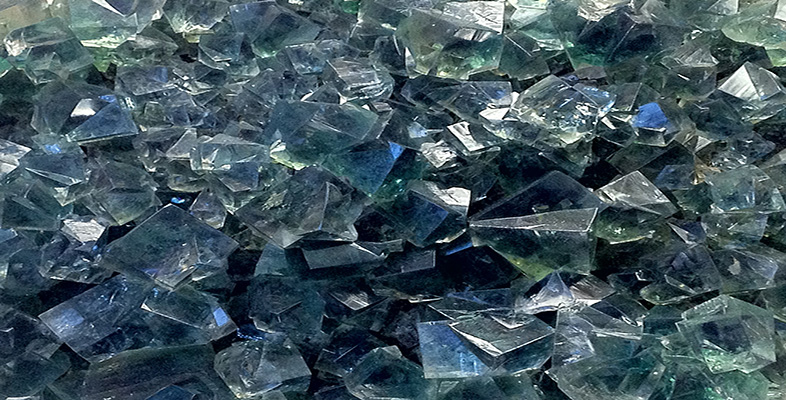1.3.6 Hardness
Hardness is loosely defined as the resistance of a material to scratching or indentation. The absolute hardness of a material can be determined precisely, using a mechanical instrument to measure the indentation of a special probe into a crystal surface. However, you can get a general idea of a mineral's relative hardness, by undertaking a few simple scratch tests.

The 19th century German mineralogist, Friedrich Mohs, devised a useful scale of mineral hardnesses, consisting of well-known minerals, ranked in order of increasing hardness, from talc, with a hardness of 1, to diamond, with a hardness of 10 (Table 2). Compared with an absolute hardness scale, Mohs' scale is highly non-linear (diamond is about four times harder than corundum; Figure 11c and b) but, because the scale uses common minerals, it provides a quick and easy reference for geologists in the field. Minerals with a hardness of less than 2.5 may be scratched by a fingernail, whereas those with a hardness of less than 3.5 may be scratched by a copper coin, and so on.
| Mohs' hardness | Reference mineral | Non-mineral example (hardness in brackets) |
|---|---|---|
| 1 | talc | |
| 2 | gypsum | |
| fingernail (2.5) | ||
| 3 | calcite | |
| copper coin Footnotes 1 (3.5) | ||
| 4 | fluorite | |
| 5 | apatite | |
| window glass/ordinary knife blade (5.5) | ||
| 6 | orthoclase feldspar Footnotes 2 | |
| hardened steel (6.5) | ||
| 7 | quartz | |
| 8 | topaz | |
| 9 | corundum | |
| 10 | diamond |
Footnotes
Footnotes 1 Note that many of today's 'copper coins' are copper-plated steel and are harder below the copper coating. Back to main textFootnotes
Footnotes 2 Other types of feldspar may have a slightly greater hardness, between 6 and 6.5. Back to main text-
Will quartz scratch topaz (Figure 11a)?
-
The hardness of quartz is 7, whereas topaz has a hardness of 8, so topaz will scratch quartz but not the other way round.
Hardness should not be confused with toughness, which is the resistance of a material to breaking. Many minerals are hard, but they may not be tough. Diamond, for example, is the hardest known material, but it is not tough: it will shatter if dropped onto a hard surface.
